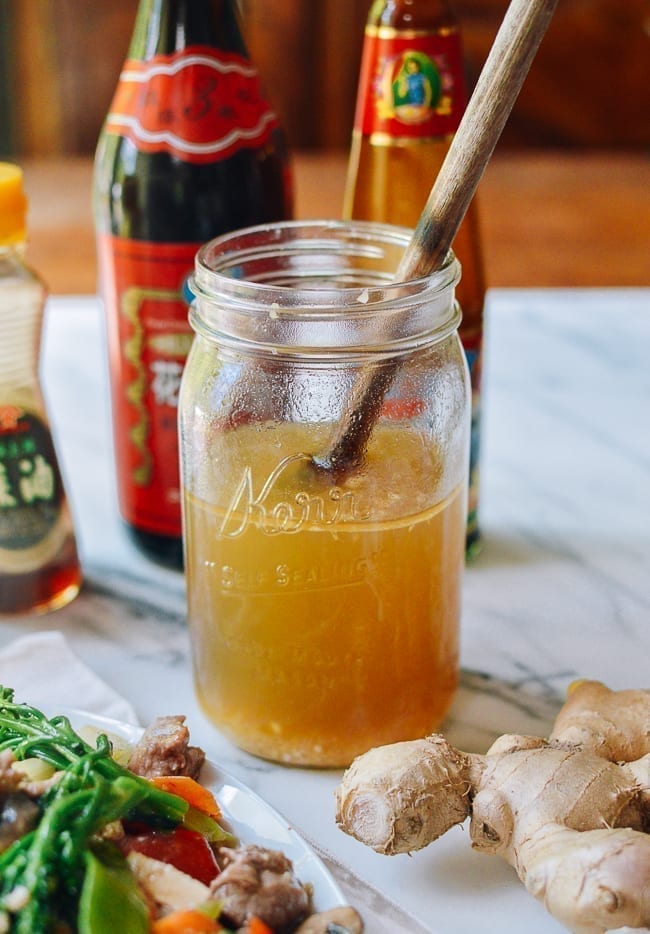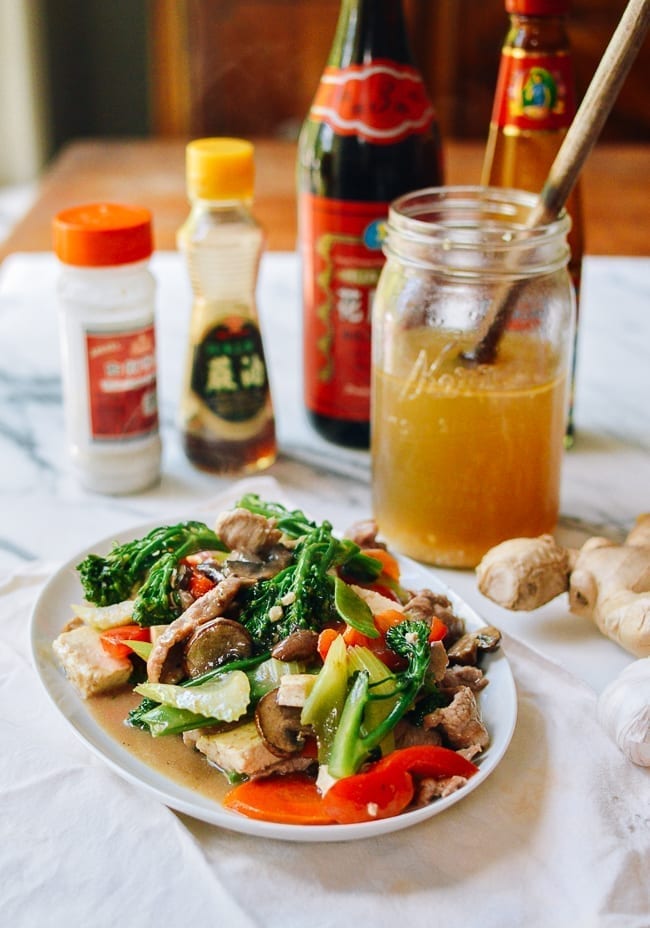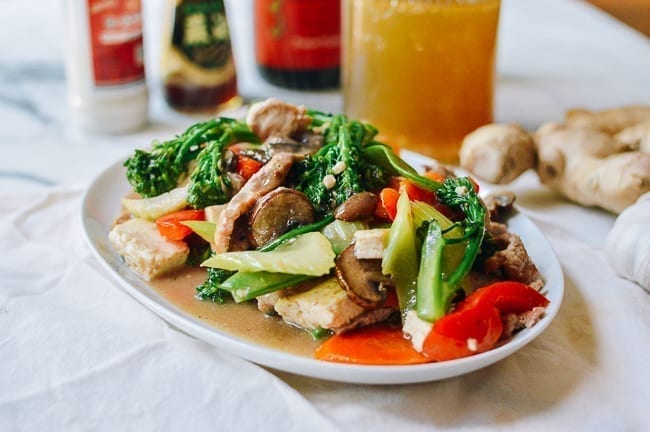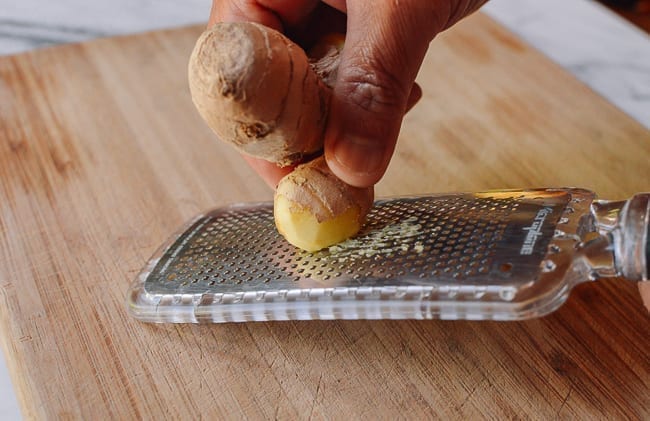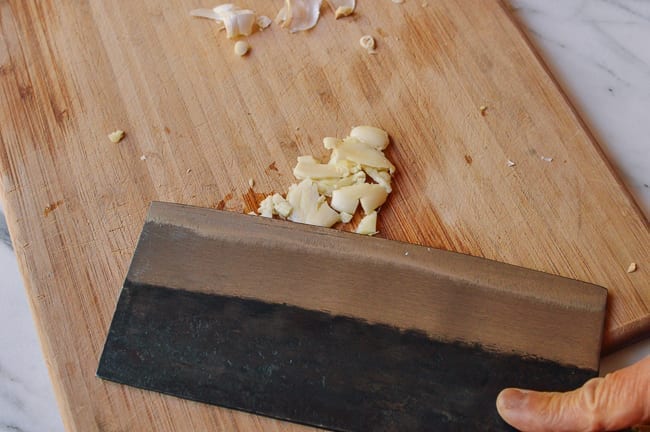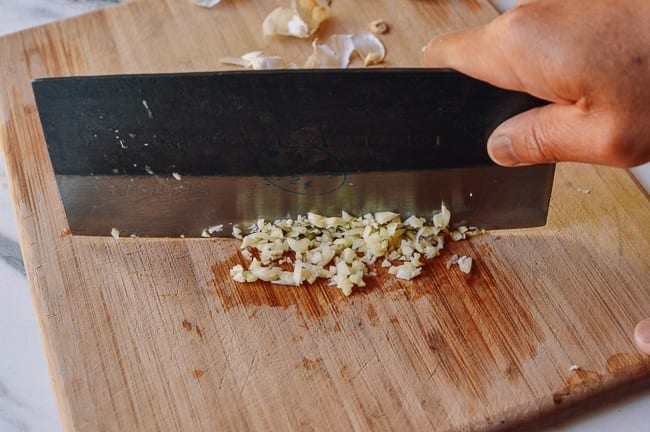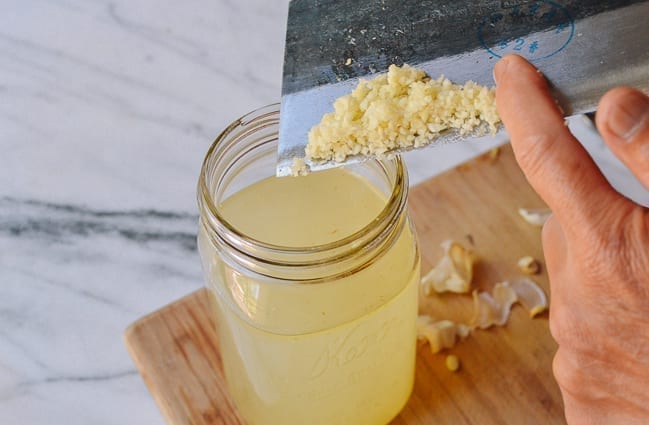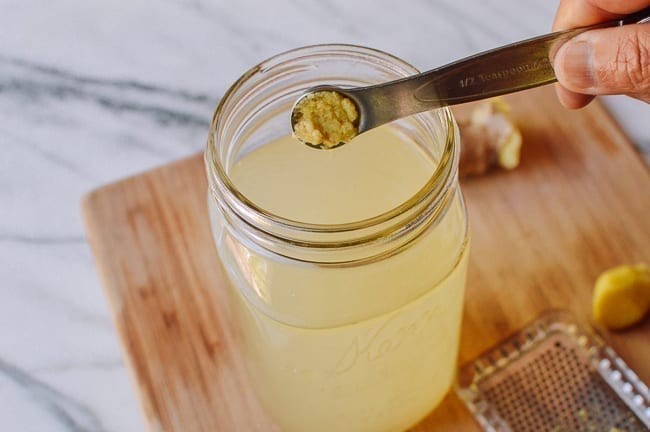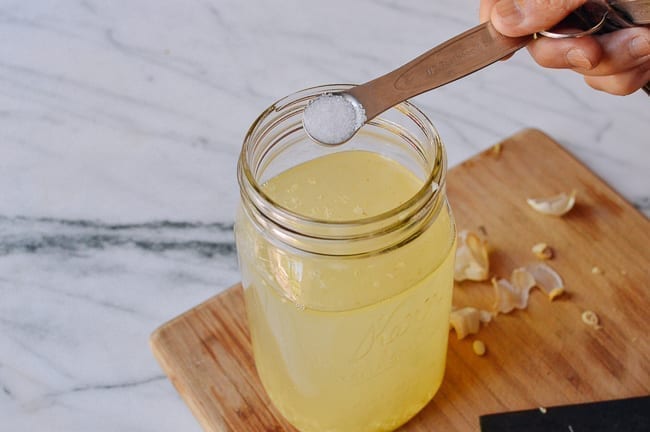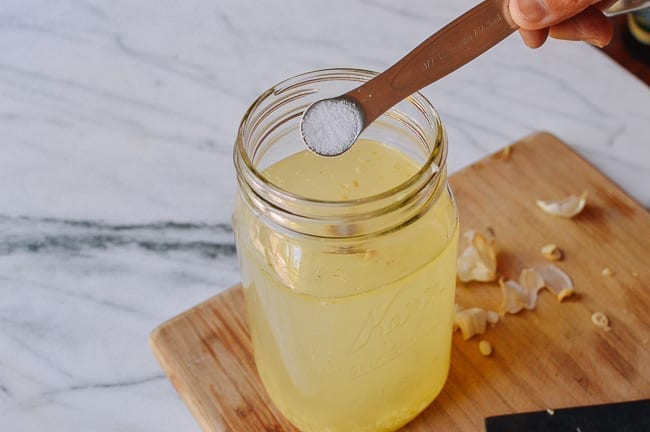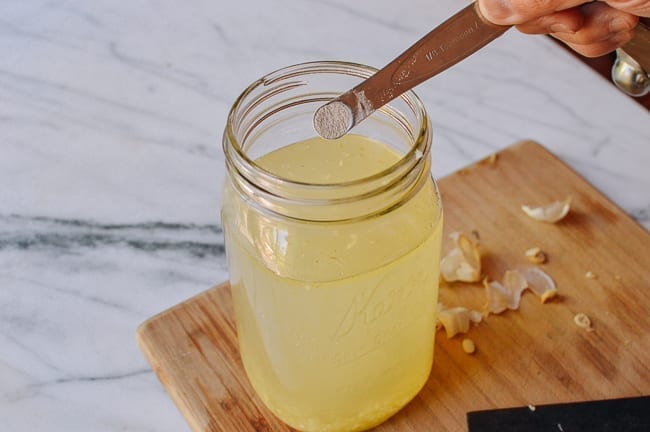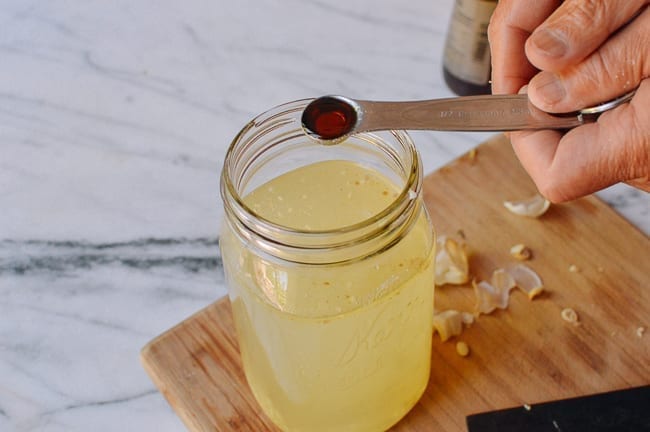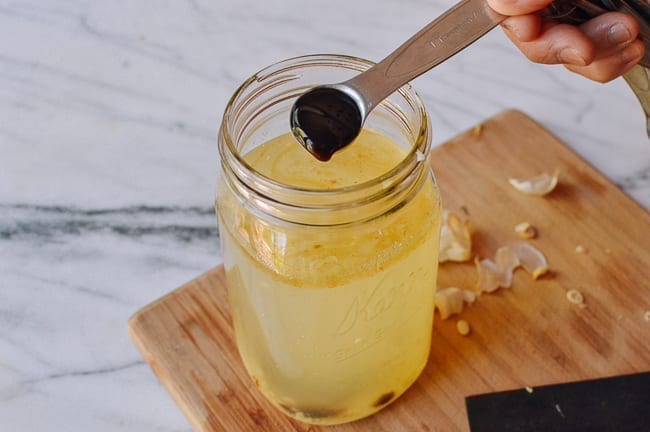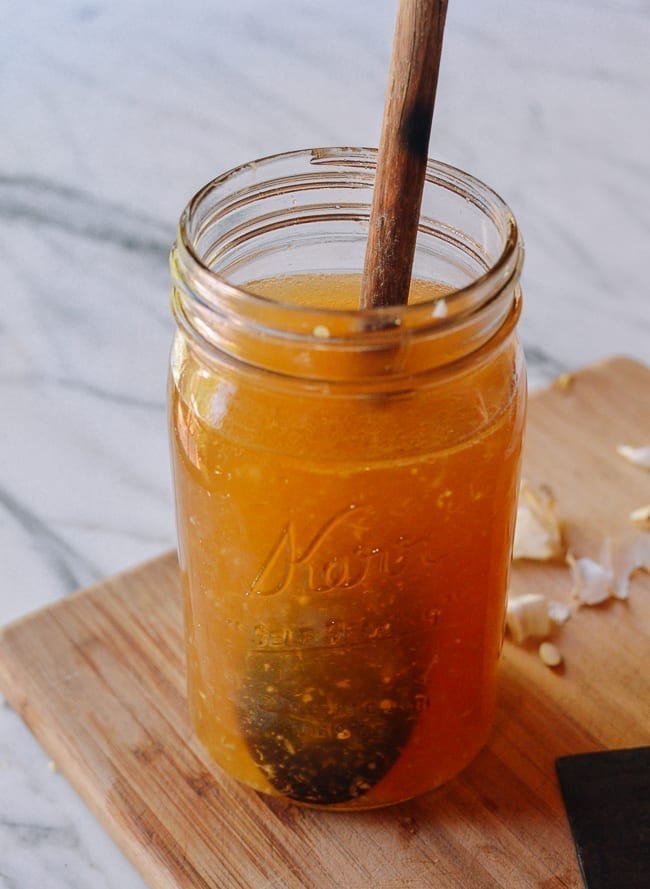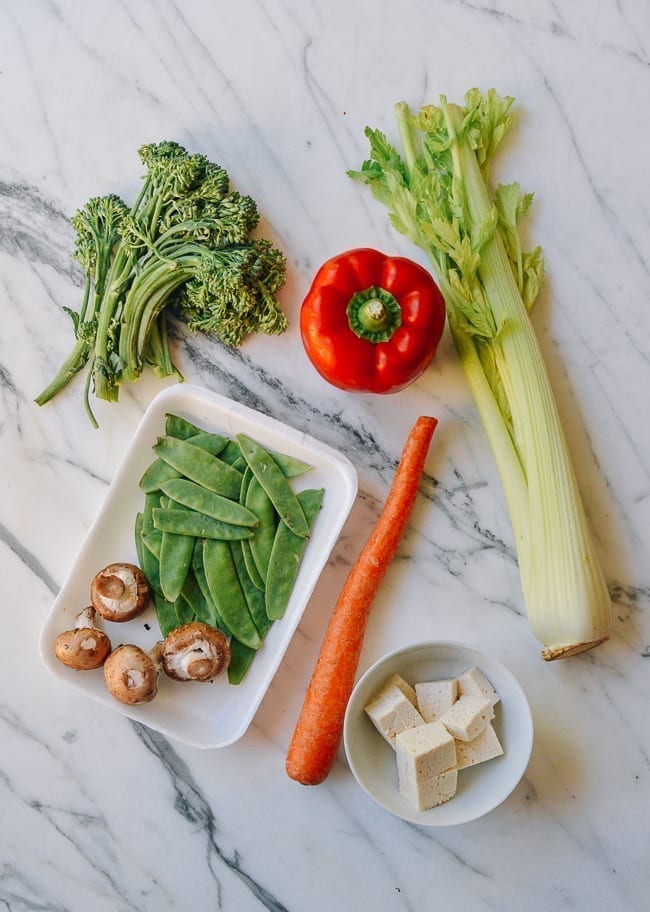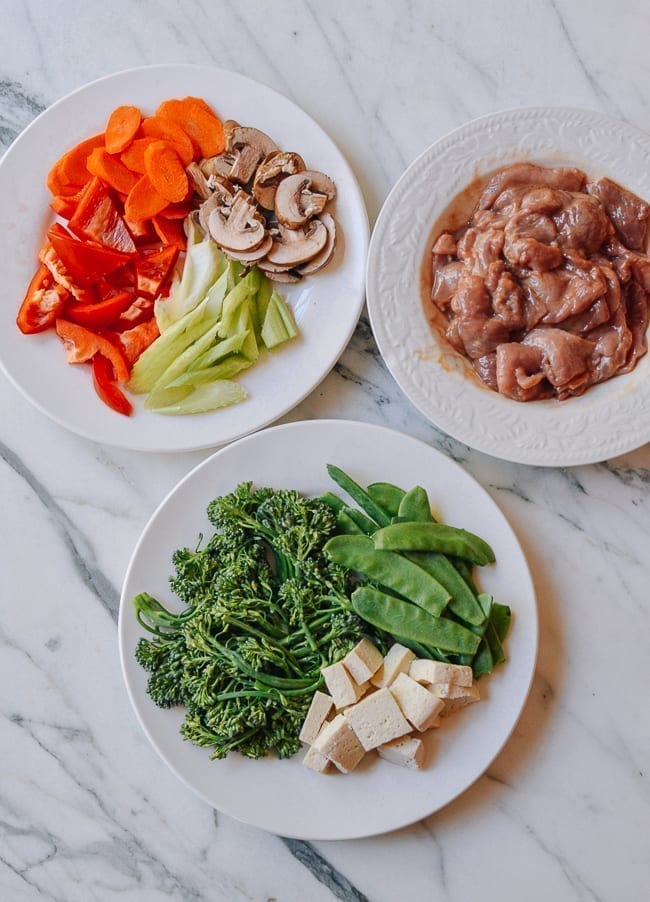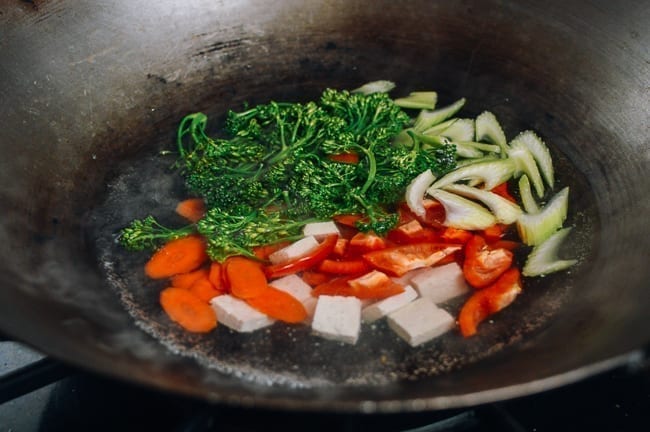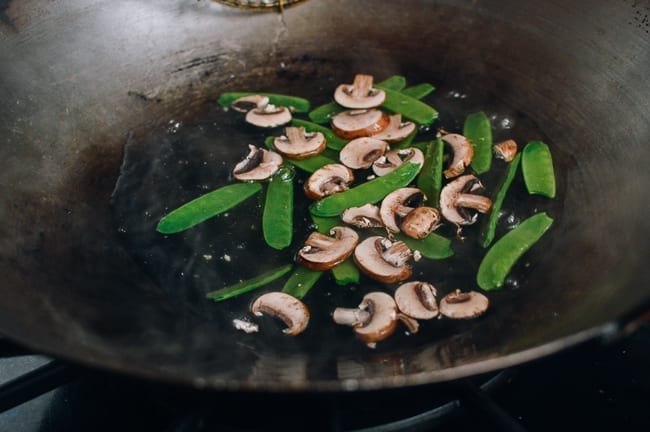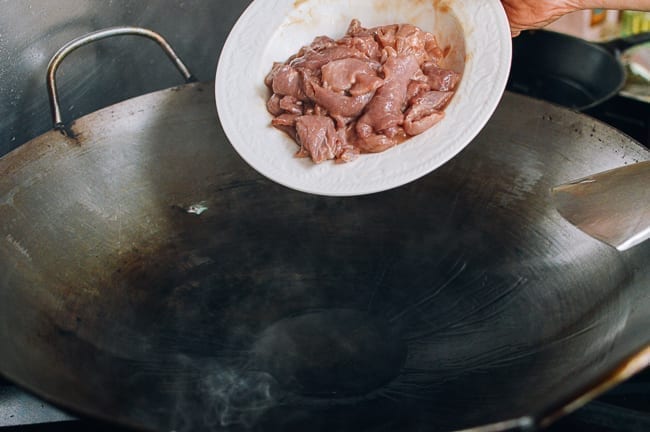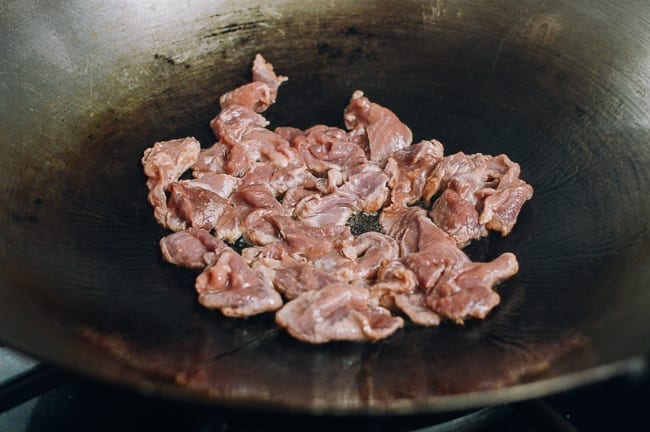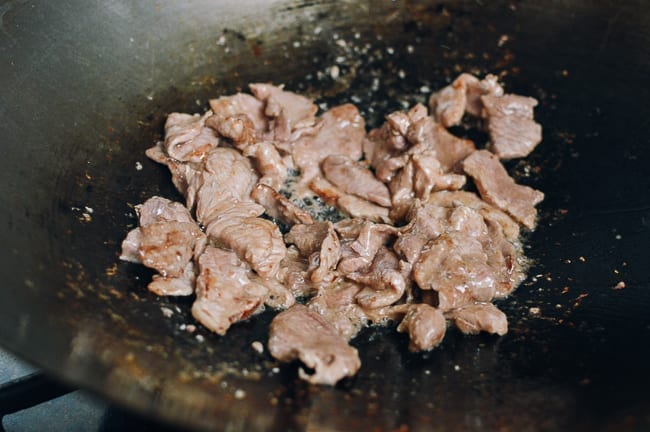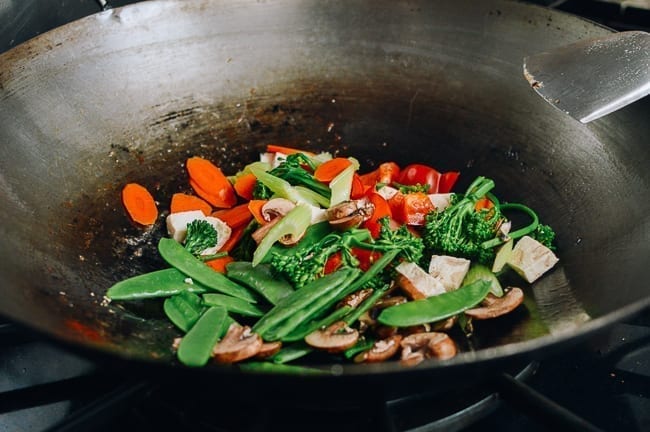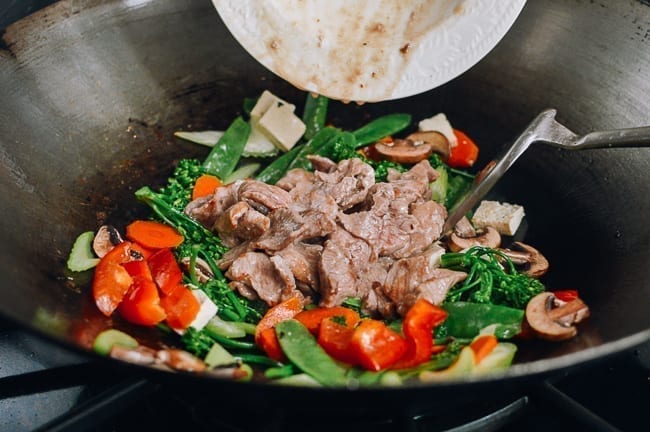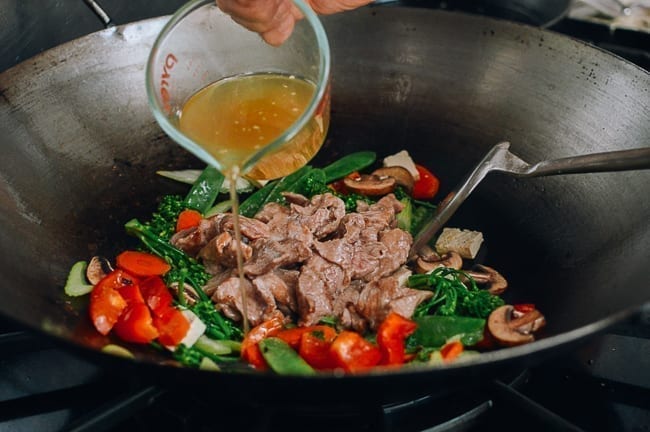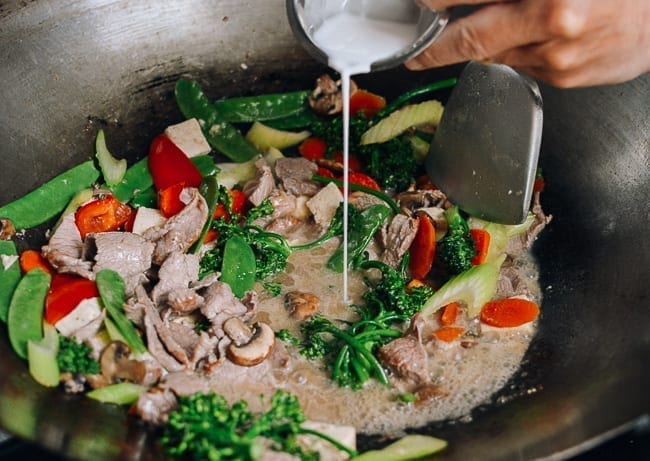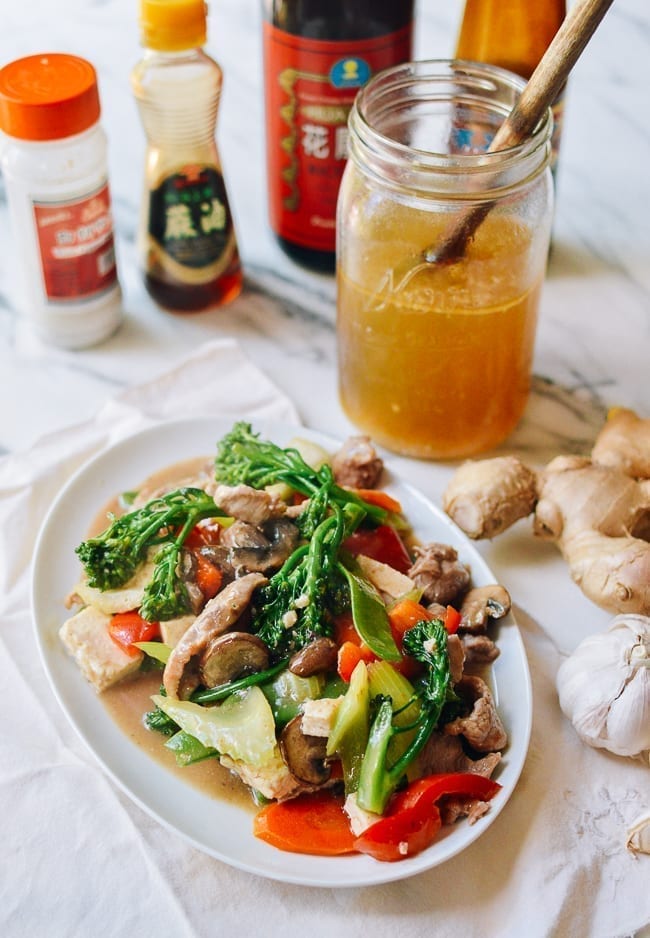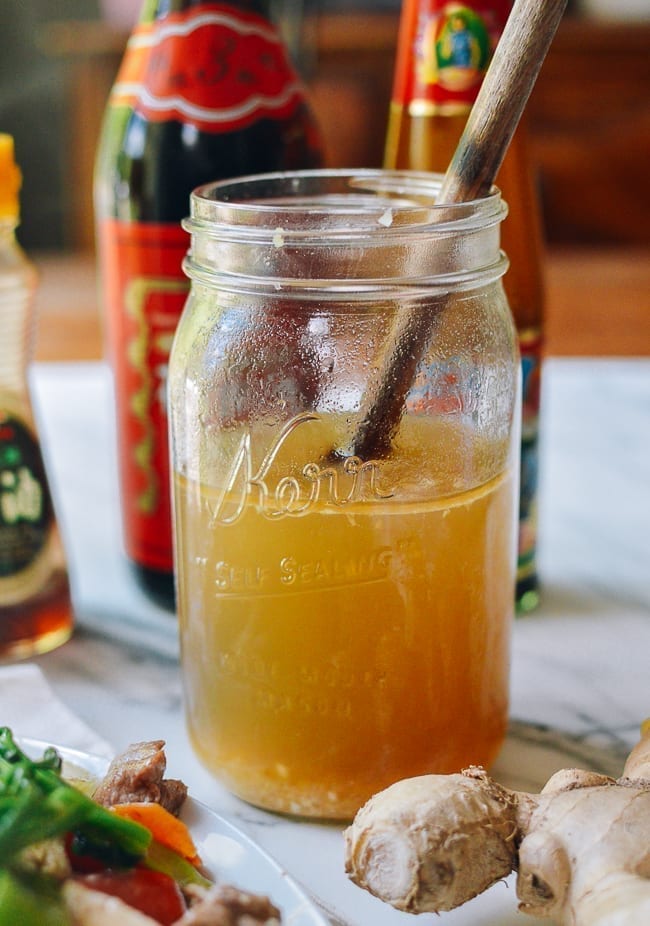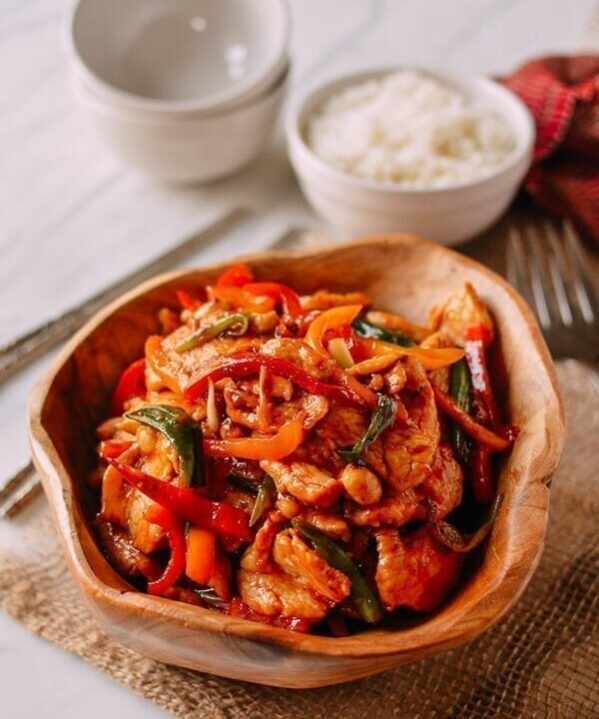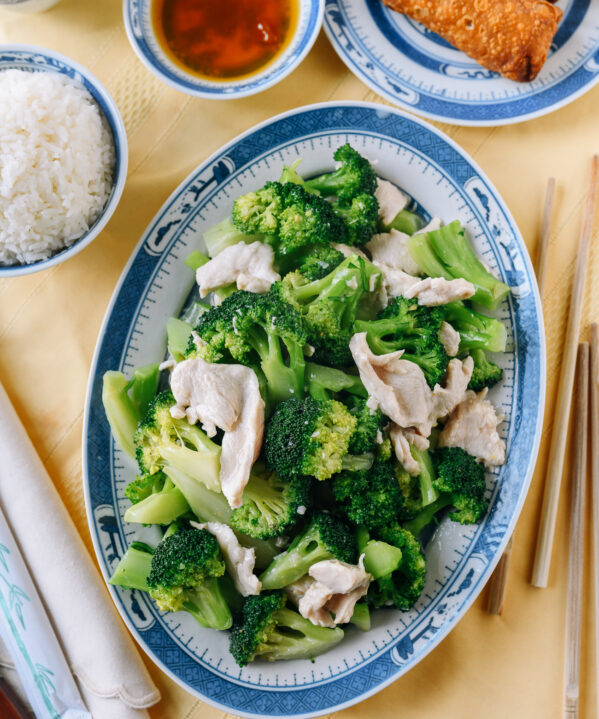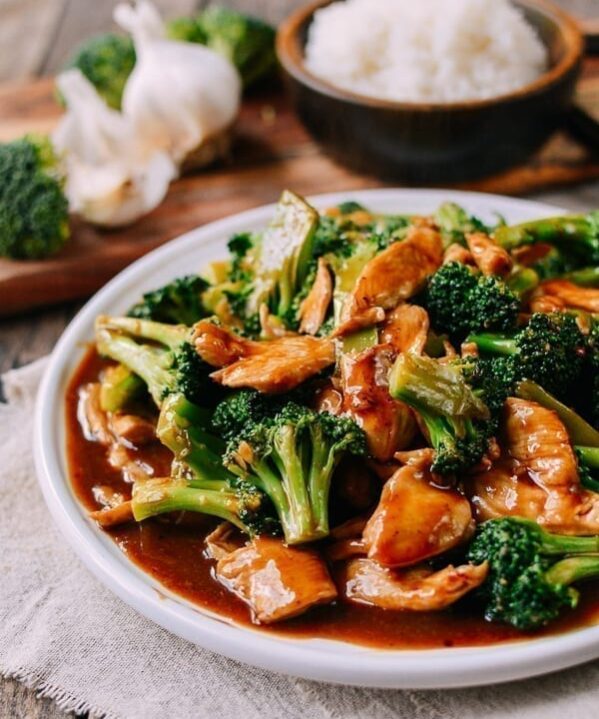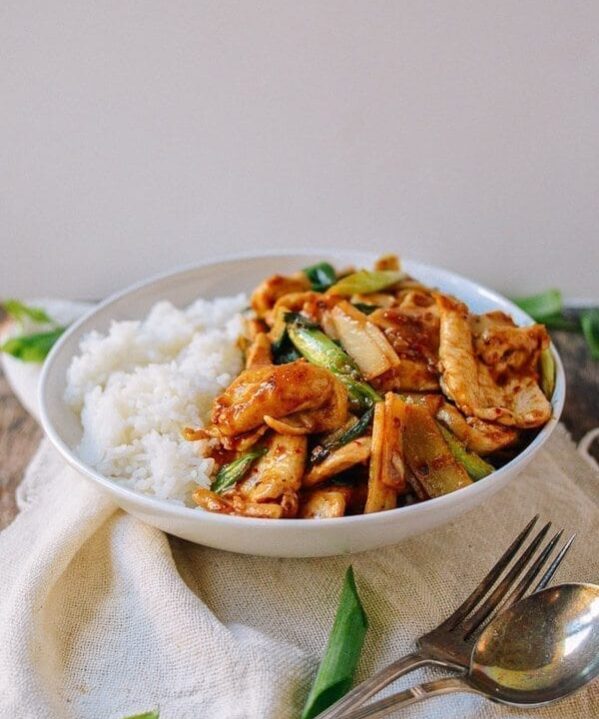This all-purpose Chinese white sauce is easy to make, store and use in any stir-fry. Keep this white stir-fry sauce in the refrigerator to quickly whip up healthy weekday dinners!
You can use any combination of vegetables and/or protein. With this sauce, you’ll be making dishes just like those you’d normally order from your local Chinese restaurant. The only difference is, you know exactly what went into it!
White Stir-Fry Sauce vs. Brown Sauce
We’ve already posted a recipe for our all-purpose brown stir-fry sauce. What’s the difference between this recipe and that one? When do you use the white vs. the brown?
Basically, Chinese brown sauce dishes have a bold flavor, with the addition of soy sauce and dark soy sauce. Some recipes add a little hoisin sauce and even a pinch of five spice powder for a more distinctive flavor.
This Chinese white sauce is more delicate and subtle in flavor. It is characteristic of Cantonese cuisine, which is lightly seasoned to allow the flavor of the base ingredients to come through.
In our Chinese white sauce, the interplay of garlic, scallions, ginger, white pepper, and a hint of toasted sesame oil complement whatever ingredients you add to your stir fry.
Is Chinese White Sauce Healthy?
In general, this is a pretty light sauce. You do need some oil to stir-fry the dish, but if you’d like to use less oil, you can blanch your choice of meat/protein along with the vegetables in water instead of searing it.
Make your own chicken, pork or vegetable stock from scratch and you’ll not only be rewarded with flavor, you can also better control the sodium levels in your dish.
To make a vegan version of the sauce, substitute vegetable stock and vegetarian oyster sauce (made with mushrooms). To make a gluten-free version, replace the oyster sauce with gluten-free oyster sauce.
It’s all a matter of personal taste, but in general, this is a very healthy way to cook your food, and get a great colorful mix of veggies into any dish.
Restaurant Memories
When I worked in Chinese restaurants, separation of duties were very important. One person manned the wok while someone else read the orders, prepped the dishes (veggies and meats) and made sure all the dishes in each order came out all at once, whether it was for a table or takeout.
Believe it or not, once you mastered the technique of wok cooking, manning the wok station was the easiest job. Whether you were cooking with two woks simultaneously or with a single high heat pow wok, all you had to think about was how to cook the dish called out to you.
I would first identify if the dish had a brown or white sauce base. Cooking brown sauce stir-fry dishes were much easier, because the brown stir-fry sauce was always pre-mixed.
White sauce dishes, on the other hand, were always hand-crafted, meaning you had to add all the ingredients separately from your condiment tray and add stock from the stock pot to round out the sauce. Chinese white sauce dishes were not as popular as brown sauce dishes, which is why I assume we didn’t bother pre-mixing the sauce.
That said, if you really enjoy white sauce dishes, pre-making the sauce is 100% worth it. When we posted our brown sauce recipe, many of you requested the white sauce version, which is why we’re bringing this recipe to you now!
Let’s talk about how to make it. From now on, fridge clean-out meals will be a snap!
How to Make Chinese White Sauce
(Scroll down to recipe card for full list of ingredients and instructions.)
Pour chicken stock, pork stock or vegetable stock into a resealable glass jar. It’s best to use home-made stock but you can use store-bought as well. If you use store-bought prepared stock, try to use a pure stock without any other flavorings added (herbs, spices, etc.), as usually store-bought stocks are usually made for western cooking.
Next, add the garlic, ginger, and scallion whites. It’s best if these aromatics are very finely minced or grated. We grated the ginger…
And with the garlic, we smashed it before finely mincing it.
Add salt…
Sugar…
Oyster sauce (or vegetarian oyster sauce)…
And MSG if using.
Seal, and shake well to combine (or stir).
Store in the refrigerator for up to 1 week. Shake before using. Makes enough sauce for 4-6 dishes.
How to Use This Sauce
To demonstrate how versatile this sauce is, we cleaned out our refrigerator of a few odds and ends.
We had a small chunk of pork shoulder, a bell pepper, some loose mushrooms, a couple wilting stalks of celery, and old bunch of broccolini, a carrot, a handful of snow peas, and some cubes of leftover tofu (this is actually what we had languishing in the fridge the day we blogged this sauce).
With those ingredients, we whipped up a pork and vegetable stir-fry! You can use any vegetables and proteins you have on hand as well. Here’s how to use this sauce to make any dish you like.
You can use:
- 8 ounces meat of your choice (pork, chicken, or beef; thinly sliced ¼ inch thick)
- 3-4 cups mixed vegetables (bell pepper, mushrooms, celery, carrots, snow peas, snap peas, broccoli/broccolini, cauliflower, bamboo shoots, lotus root, etc.)
- ½ cup firm tofu cubes (optional)
- 2 tablespoons vegetable oil
- 1 tablespoon Shaoxing wine
- ½-¾ cup prepared Chinese white sauce (depending upon how much sauce you like)
- 1 tablespoon cornstarch (mixed with 1 tablespoon water; you may need a little more or less, depending upon how much sauce you use and how thick you like it)
Take your sliced meat, and velvet it using our method for velveting beef, velveting chicken, or velveting pork. Slice your vegetables so they’re all similar sizes.
Bring 4 to 6 cups of water to a boil, and blanch the vegetables and tofu for 30 to 60 seconds. Drain thoroughly and set aside. (Blanch in 2 batches if you have lots of vegetables, or if vegetables require different cooking times. Dense vegetables like carrots and broccolini will take a little longer than snap peas and mushrooms, for example).
Heat your wok over high heat until it just starts to smoke. Use 2 tablespoons of vegetable oil to evenly coat the wok. Spread the velveted meat in the wok in one layer.
Sear for 30 seconds on each side.
Remove from the wok and set aside. (For more information on how to sear meat, see Judy’s technique to keep food from sticking to a wok.) Note, instead of searing the meat, you can also blanch it; just reduce oil to 1 tablespoon for stir-frying.
Next, without washing the wok, reheat your wok over high heat, and add the blanched vegetables and Shaoxing wine.
Stir everything together, and add the meat.
Then add ½ to ¾ cup of your white stir-fry sauce.
Stir-fry everything together to deglaze the wok, and keep cooking until the sauce comes to a full simmer.
Mix the cornstarch and water into a slurry. Move the pork and vegetables to the sides of the wok. There should be a little well of sauce/liquid at the center of the wok. Pour the cornstarch slurry into the liquid, stirring constantly, until thickened.
Give everything a final stir. Taste for seasoning and adjust if needed. Plate and serve over steamed rice.
All- Purpose Chinese White Sauce
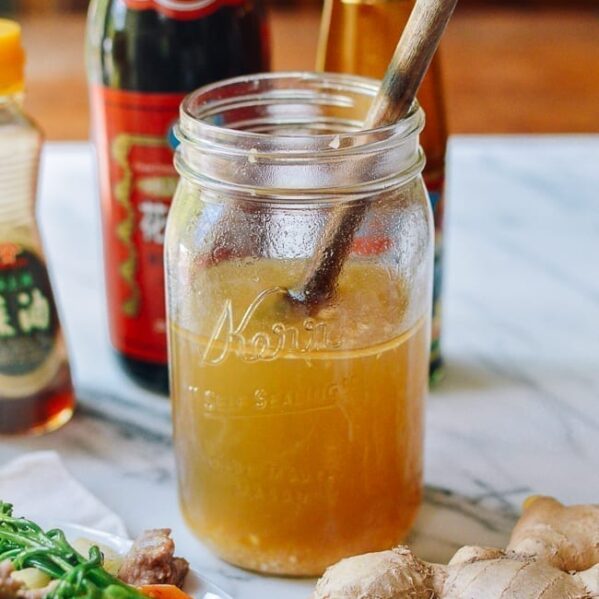
Ingredients
For the Chinese white sauce:
- 3 cups stock (chicken stock, pork stock or vegetable stock, 700 ml)
- 3 cloves garlic (finely minced or grated)
- 3/4 teaspoon ginger (grated)
- 1 teaspoon scallion (white part only, minced)
- 1 1/2 teaspoon salt (to taste)
- 3/4 teaspoon sugar
- 1/8 teaspoon white pepper
- 3/4 teaspoon sesame oil
- 1 1/2 teaspoon oyster sauce (or vegetarian oyster sauce)
- 1 teaspoon MSG (totally optional!)
To make a stir-fry:
- 8 ounces meat of your choice (225g, pork, chicken, or beef; thinly sliced ¼ inch thick)
- 3 cups mixed vegetables (bell pepper, mushrooms, celery, carrots, snow peas, snap peas, broccoli/broccolini, cauliflower, bamboo shoots, lotus root, etc.)
- 1/2 cup firm tofu (cubed, optional)
- 2 tablespoons vegetable oil
- 1 tablespoon Shaoxing wine
- 1/2 - 3/4 cup prepared Chinese white sauce (depending upon how much sauce you like)
- 1 tablespoon cornstarch (mixed with 1 tablespoon water; you may need a little more or less, depending upon how much sauce you use and how thick you like it)
Instructions
To make the white sauce:
- Pour chicken, pork or vegetable stock into a resealable glass jar. It’s best to use home-made stock but you can use store-bought as well. If you use store-bought prepared stock, try to use a pure stock without any other flavorings added (herbs, spices, etc.), as usually store-bought stocks are usually made for western cooking.
- Next, add the garlic, ginger, and scallion whites. It’s best if these aromatics are very finely minced. Add, salt, sugar, white pepper, sesame oil, oyster sauce (or vegetarian oyster sauce), and MSG if using.
- Seal, and shake well to combine. Store in the refrigerator for up to 1 week. Shake before using. Makes enough sauce for 4-6 dishes.
To use this sauce:
- Take your sliced meat, and velvet it using our method for velveting beef, velveting chicken, or velveting pork.
- Bring 4 to 6 cups of water to a boil, and blanch the vegetables and tofu for 30 to 60 seconds. Drain thoroughly and set aside. (Blanch in 2 batches if you have lots of vegetables, or if vegetables require different cooking times. Dense vegetables like carrots will take a little longer than snap peas, for example).
- Heat your wok over high heat until it just starts to smoke. Use 2 tablespoons of vegetable oil to evenly coat the wok. Spread the velveted meat in the wok in one layer. Sear for 30 seconds on each side. Remove from the wok and set aside. Note, instead of searing the meat, you can also blanch it; just reduce oil to 1 tablespoon for stir-frying.
- Next, without washing the wok, reheat your wok over high heat, and add the blanched vegetables and Shaoxing wine. Stir everything together, and add the meat.
- Add ½ to ¾ cup of your white stir-fry sauce, and stir-fry everything together to deglaze the wok. Keep cooking until the sauce comes to a full simmer.
- Mix the cornstarch and water into a slurry. Move the pork and vegetables to the sides of the wok. There should be a little well of sauce/liquid at the center of the wok. Pour the cornstarch slurry into the liquid, stirring constantly, until thickened.
- Give everything a final stir. Taste for seasoning and adjust if needed. Plate and serve over steamed rice.
